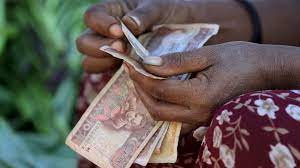APA-Addis Ababa (Ethiopia) Economic growth in sub-Saharan Africa will slow down to 3.1 percent in 2023 from 3.6 percent in 2022, the World Bank has announced.
The World Bank, in its April 2023 economic report for sub-Saharan Africa, said the growth across the region remains sluggish, dragged down by uncertainty in the global economy, high inflation, and a sharp deceleration of investment growth.
The report says the African governments must sharpen their focus on macroeconomic stability, domestic revenue mobilization, debt reduction, and productive investments to reduce extreme poverty and boost shared prosperity in the medium-to-long term amid dampened growth prospects and rising debt levels.
World Bank Chief Economist for Africa Andrew Dabalen said weak growth combined with debt vulnerabilities and dismal investment growth risks a lost decade in poverty reduction.
“Policymakers need to redouble efforts to curb inflation, boost domestic resource mobilization, and enact pro-growth reforms while continuing to help the poorest households cope with the rising costs of living,” Dabalen added.
According to the report, economic activity in South Africa is set to weaken further in 2023 (0.5 percent annual growth) as the energy crisis deepens, while the growth recovery in Nigeria for 2023 (2.8 percent) is still fragile as oil production remains subdued.
The World Bank said the real gross domestic product (GDP) growth of the western and central Africa subregion is estimated to decline to 3.4 percent in 2023 from 3.7 percent in 2022, while that of eastern and southern Africa declines to 3.0 percent in 2023 from 3.5 percent in 2022.
The report said debt distress risks remain high, with 22 countries in the region at high risk of external debt distress or in debt distress as of December 2022.
“Unfavorable global financial conditions have increased borrowing costs and debt service costs in Africa, diverting money from badly needed development investments and threatening macro-fiscal stability,” it noted.
According to the report, despite these challenges, many countries in the region are showing resilience amidst multiple crises.
MG/as/APA


